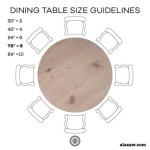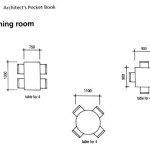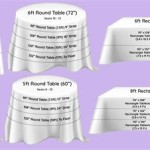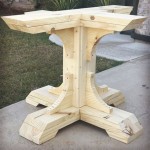Decorating Ideas for Thanksgiving Table Setting
Thanksgiving is a holiday centered around gratitude, family, and, of course, food. A well-decorated Thanksgiving table setting is not merely an aesthetic choice; it is an integral part of creating a warm and inviting atmosphere that enhances the overall dining experience. The table serves as the focal point for the gathering, setting the tone for the meal and fostering a sense of togetherness. A thoughtful table arrangement can transform a simple meal into a memorable occasion, celebrating the season's bounty and the shared experience of the holiday.
Effective Thanksgiving table décor extends beyond simply placing plates and silverware. It involves considering the overall color scheme, incorporating seasonal elements, and paying attention to the details that contribute to a cohesive and visually appealing presentation. The goal is to create a tableau that is both beautiful and functional, allowing guests to comfortably enjoy the meal while appreciating the artistic elements of the table setting.
Selecting a Color Palette for Thanksgiving
The foundation of any successful table setting is a well-defined color palette. For Thanksgiving, traditional colors often include warm autumnal hues such as oranges, reds, yellows, and browns. These colors evoke the feeling of fall foliage and create a cozy atmosphere. However, it is important to consider variations within these traditional themes and explore complementary colors that can add depth and sophistication to the table.
Neutral tones, such as creams, beiges, and grays, can serve as an excellent base for a Thanksgiving table setting. These neutral colors provide a calming backdrop that allows the richer autumnal colors to stand out. Linens, such as tablecloths and napkins, are a prime opportunity to incorporate these neutral tones. A cream-colored tablecloth, for example, can be paired with orange or red accents in the centerpieces and place settings.
Introducing metallic accents can also elevate the overall look of the Thanksgiving table. Gold, copper, and bronze tones lend a touch of elegance and warmth. These metallic hues can be incorporated through silverware, candle holders, or decorative accents. However, it is crucial to avoid overusing metallic elements, as they can easily overwhelm the table. The key is to use them sparingly to add subtle highlights and visual interest.
Beyond traditional autumnal colors, consider incorporating unexpected pops of color to add a modern twist to the Thanksgiving table. Deep greens, blues, or even purples can be used in small doses to create visual contrast and prevent the table from looking monotonous. These colors can be introduced through floral arrangements, accent plates, or even small decorative items scattered around the table.
When choosing a color palette, it is essential to consider the existing décor of the dining room. The table setting should complement the overall aesthetic of the space and create a cohesive look. If the dining room has a warm color scheme, stick to similar hues for the table setting. If the dining room is more neutral, you have more flexibility in choosing colors for the table.
Incorporating Seasonal Elements and Textures
One of the most effective ways to enhance a Thanksgiving table setting is by incorporating seasonal elements. Natural materials and textures that evoke the feeling of fall can significantly contribute to the overall atmosphere. Items such as pumpkins, gourds, leaves, and branches can be used in creative and visually appealing ways.
Pumpkins and gourds are classic Thanksgiving decorations. They can be used as centerpiece elements, place card holders, or even individual decorations scattered along the table runner. Consider using a variety of sizes, shapes, and colors of pumpkins and gourds to create visual interest. White pumpkins, in particular, can add a touch of elegance and sophistication to the table setting.
Fall leaves are another readily available and beautiful natural element that can be incorporated into the table setting. Freshly fallen leaves can be arranged in vases, scattered along the table runner, or used as decorative accents on place settings. Consider pressing leaves to preserve their color and shape, allowing them to be used in a variety of craft projects related to the table setting.
Branches and twigs can also be used to add height and texture to the Thanksgiving table setting. Branches can be arranged in vases or used to create a rustic centerpiece. Alternatively, smaller twigs can be used to tie napkins or add a natural touch to place settings. When using branches, ensure they are clean and free of debris.
Textures play a crucial role in creating a visually appealing and tactile Thanksgiving table setting. Combining different textures can add depth and complexity to the overall look. Consider using linens with different weaves, such as a burlap table runner paired with smooth cotton napkins. Wood elements, such as wooden chargers or serving platters, can also add a rustic touch.
Additional seasonal elements that can enhance the Thanksgiving table setting include pinecones, acorns, and berries. These small natural elements can be used to fill empty spaces or add a touch of whimsy to the table. Pinecones can be arranged in bowls or used as place card holders, while acorns and berries can be scattered around the centerpiece.
Attention to Detail: Place Settings and Centerpieces
The individual place settings and the centerpiece are the most crucial elements of a Thanksgiving table setting. The place settings are where each guest will interact with the table, while the centerpiece serves as the focal point of the entire arrangement. Careful attention to detail in these areas can significantly enhance the overall dining experience.
A well-designed place setting should be both functional and aesthetically pleasing. The basic elements of a place setting include a plate, silverware, glassware, and a napkin. The arrangement of these elements should be logical and easy to navigate. The plate should be centered in front of the chair, with the silverware arranged on either side in the order it will be used.
The choice of silverware can significantly impact the overall look of the table. Silverware with a classic design is always a safe choice, but consider using silverware with a more modern or ornate design to add a touch of personality. Metallic silverware, such as gold or copper, can also elevate the table setting.
The glassware should complement the overall style of the table setting. Consider using different types of glasses for water, wine, and other beverages. Crystal glassware can add a touch of elegance, while more simple glassware can be used for a more casual setting. The placement of the glassware should be on the upper right-hand side of the plate.
Napkins provide an opportunity to add color and texture to the place setting. Cloth napkins are generally preferred over paper napkins for a more formal Thanksgiving dinner. The napkins can be folded in a variety of styles, from simple folds to more elaborate designs. A napkin ring can also be used to add a touch of elegance.
The centerpiece is the focal point of the Thanksgiving table setting and should be visually appealing and appropriately sized for the table. The centerpiece should not be so large that it obstructs the view of guests across the table. Common centerpiece elements include floral arrangements, candles, pumpkins, and gourds.
Floral arrangements are a popular choice for Thanksgiving centerpieces. Consider using seasonal flowers in warm autumnal colors. The arrangement can be either formal or informal, depending on the overall style of the table setting. Adding greenery, such as eucalyptus or ferns, can add texture and visual interest.
Candles can create a warm and inviting atmosphere. Use a variety of candle heights and sizes to create visual interest. Consider using scented candles with autumnal scents, such as cinnamon or apple spice. However, be mindful of any allergies or sensitivities guests may have. Ensure candles are placed safely away from flammable materials.
In addition to traditional centerpieces, consider creating unique and unexpected arrangements. For example, a collection of vintage bottles filled with autumn leaves can create a rustic and charming centerpiece. Alternatively, a grouping of pumpkins and gourds arranged on a wooden platter can create a simple yet elegant centerpiece.
Personalized place cards can add a thoughtful touch to the Thanksgiving table setting. Place cards can be simple handwritten notes or more elaborate creations. Consider using seasonal elements, such as leaves or small pumpkins, as place card holders. Place cards can also serve as a small gift or memento for guests to take home.
Ultimately, the goal of a Thanksgiving table setting is to create a warm, inviting, and memorable dining experience for guests. By carefully considering the color palette, incorporating seasonal elements, and paying attention to the details of the place settings and centerpiece, it is possible to create a Thanksgiving table that is both beautiful and functional.

47 Fabulous Diy Ideas For Thanksgiving Table Decor

40 Best Thanksgiving Table Setting Ideas 2024

40 Best Thanksgiving Table Setting Ideas 2024

25 Best Thanksgiving Table Decor Ideas For 2024

20 Thanksgiving Table Centerpiece Ideas 2024 Balsam Hill

Thanksgiving Table Setting Menu And Recipe Ideas

58 Best Thanksgiving Table Setting Ideas And Decor For 2024

35 Gorgeous Thanksgiving Table Decorations Easy Centerpiece Ideas Modern Dinner

21 Thanksgiving Table Decorations Decor Ideas

Best Thanksgiving Decorating Ideas Balsam Hill








